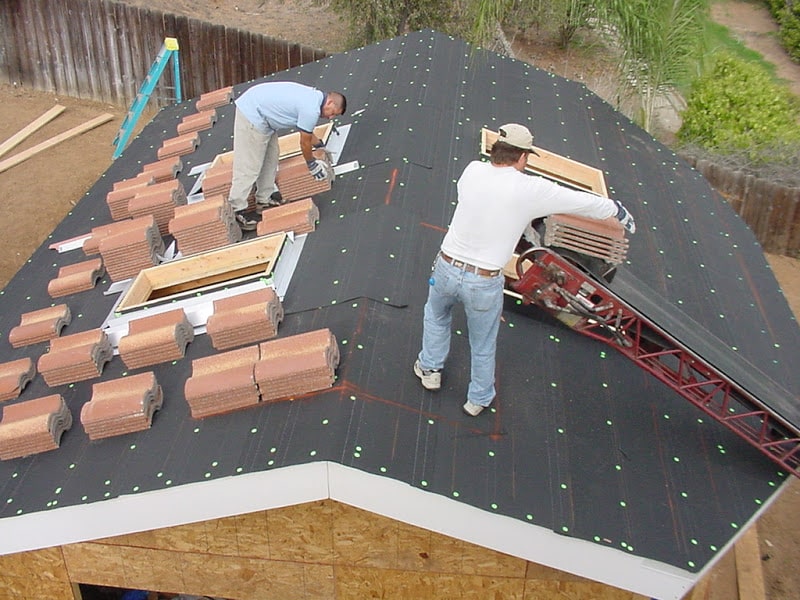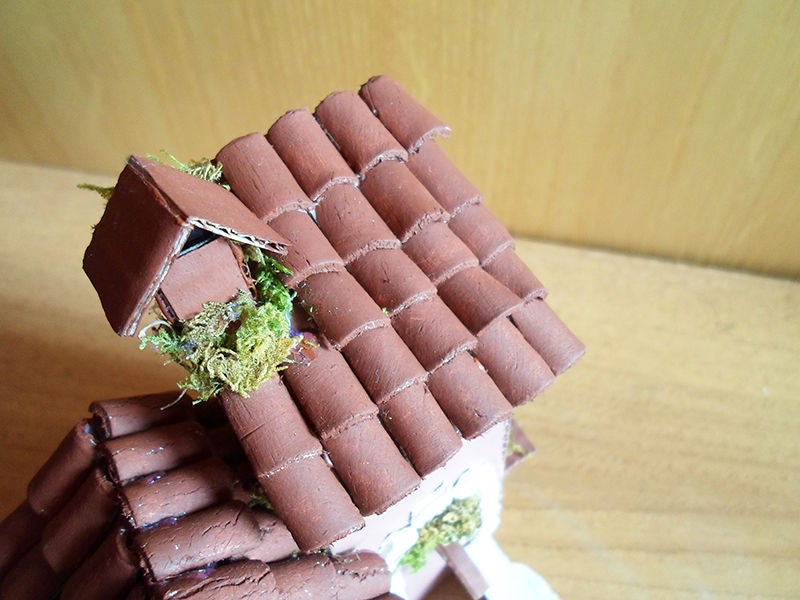Bitumen tiles or what is a soft roof
The roofing provides heat and dryness in the building, protecting the interior from precipitation.
Since the roof is under the constant influence of weather phenomena: it is experiencing rain, snow, hail, UV radiation – the material from which it should be made of high-quality and durable and serve more than a dozen years.
One of these materials is bitumen tile. Thanks to its unique properties and it has won recognition as one of the best materials for roofing work.
What is Bitumen tile?
Bitumen tile is a composite material made of glass canvas (canvas made of the finest glass threads, stretched at high temperature by a special technology), bitumen (tar-like product) and stone crumbs of different fractions (mainly from shale and basalt).
Glass canvas canvas, unlike paper, does not decompose over time, it is a bio-resistant and durable material. Glass canvas canvas is impregnated with bitumen and covered with mineral crumbs. The latter performs the following functions:
- Protects the bitumen base from ultraviolet radiation and sunlight melting;
- Protects the roof from mechanical effects of precipitation (hail and snow) and the environment (branches of trees, for example);
- ensures the strength of the material;
Feature of the given roofing material – possibility of use for a roof not only the correct geometrical form, but also a difficult roof. Therefore, shingles are also called “flexible” and “soft” roofing and give preference to it, if it is necessary to implement a bold architectural solution.
Soft Roofing
The basis for the installation of soft shingles is a solid shingle. Moisture resistant plywood or OSB is used as a solid flooring. The tile itself is a small size shingles with shaped cuts on one side. The back side of the material has an adhesive strip designed to be attached to a wooden base.
Glue each sheet by piece. Additionally, each shingles are fastened with nails or screws. When installing a soft tile overlapping shingles all the seams overlap, and the caps of nails are hidden. In warm sunny weather, the bitumen roof is heated to a temperature of self-vulcanization, resulting in a solid hermetic coating.

The benefits of bitumen tiles
- bitumen tile has a low weight, so easy to install and easy to use.
- Roofing material is distinguished by its cost-effectiveness. At correct packing practically there is no waste. Calculate the necessary amount of tiles – it is not difficult.
- tile has high noise insulation properties, resistant to chemicals, bio-resistant. It is not afraid of sudden changes in temperature.
- The tile does not support burning: even in contact with an open flame it will not burn.
- Thanks to the crumbling of stone, the tile does not burn out in the sun. It meets all environmental regulations and standards. Therefore, it is absolutely safe for human health.
- Bitumen is a tar-like product, so it is waterproof and is not afraid of water (provided that the integrity of the entire roof covering is preserved).
- This roofing material is durable. The service life of bitumen tiles is not less than 15 years.
- Soft tile has a modern look and looks very aesthetic on the roofs of any configuration. Bitumen tile has a wide range of colors (it is the stone crumb gives the material a variety of color shades). Also, tiles have different types of shapes: you can find sheets in the form of a hexagon, triangle, rectangle, as well as with the imitation of beaver tail.
Soft roof repair
This material is repairable. If your bitumen coating is damaged (by tools during installation, collapsed branch, ice) it can be repaired quite easily. Materials for repairing this type of roof are as follows: you can use a special roof sealant, which will ensure reliable sealing of damaged areas.
It is advisable to use it in case of cracks and small defects. Why pay attention to small cracks? Maintaining the integrity of the coating is extremely important, because through the cracks and faults in the coating gets moisture and water, which can lead to serious damage to the entire structure.
If you have significant damage, it is worth dismantling the area. To do this, heat up the damaged tiles and two in the top row above them with a hair dryer or burner. Next, a large flat trowel lifts these plates, removes nails from them, carefully cut out these damaged areas, and in their place mount new sheets, surfacing with a burner and fixing them with additional nails.
This roofing material will be an adornment of any building, and competent installation will ensure the reliability of coverage for many years.

